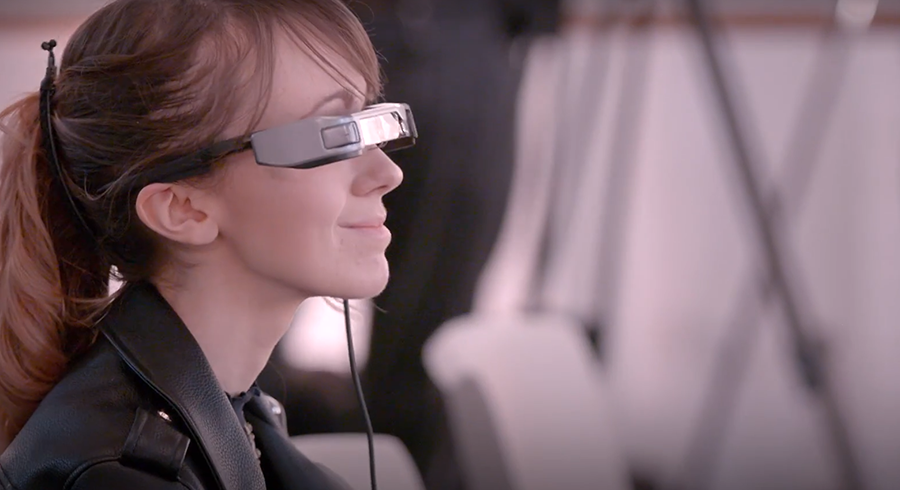While most movies come with subtitles for the hearing impaired at the bottom of the screen, an on-stage play cannot afford to do that. Now, the National Theater (NT) in London is experimenting with smartglasses to do just that. The theater has partnered up with Accenture to develop a new service that will allow hard of hearing individuals to see the dialog on stage by wearing a pair of Epson smartglasses.
Related These Smartglasses Block Out Screens Around You When You Put Them On
Dubbed “smart caption glasses” these devices have now been officially launched, following a year of audience testing. When wearing the glasses, users will see a transcript of the dialogue and descriptions of the sound from a performance displayed on the lenses of the glasses.
The NT is allowing hard of hearing people to use the glasses without charge for the play “War Horse” and for the musical “Hadestown,” and they will be available for all of the theater’s 2019 season.
The glasses comprise of two main components. The first is known as Open Access Smart Capture technology. It utilizes custom voice-following software to keep track of exactly where the show is in the script.
The second is Epson’s Moverio BT-350 smartglasses that display a synced transcript of the dialog directly onto the lenses. Each user determines the typeface size, color and position before the show starts. The National Theater is planning further development of the software so that the system can be used for live captioning, opening the door to talks and drama workshops, reports New Atlas.

Jonathan Suffolk, the theater’s technical director, told New York Times that the glasses had taken two years to develop. “We could have offered the scripts on a phone, but we wanted a technology that was much more discreet and immersive and wouldn’t disturb anyone,” he said.
Timing of the subtitles being displayed was the biggest challenge, because the words needed to be displayed so that folks wearing the glasses reached important moments – such as jokes – along with everyone else, Mr. Suffolk added. He said that it’s easy to load a script into the system and hit “go” at the beginning of the play, but problems would arise if the actors spoke quicker or slower than expected.
The software follows live speech and recognizes certain stage directions, like lighting changes, to ensure the subtitles appear in the right place. The words are then transmitted to the glasses over Wi-Fi.
Related Brain Power Ships Empowered Brain, World’s First Smartglasses to Help People with Autism
“The NT is continually improving how our audiences access our work,” said The National Theatre’s Lisa Burger. “The development of the smart caption glasses is an important step towards giving people a better service, with the freedom and choice around when and how they come to the theater, and I look forward to seeing the impact the glasses will have, not only at the NT, but in the entertainment industry more widely.”












